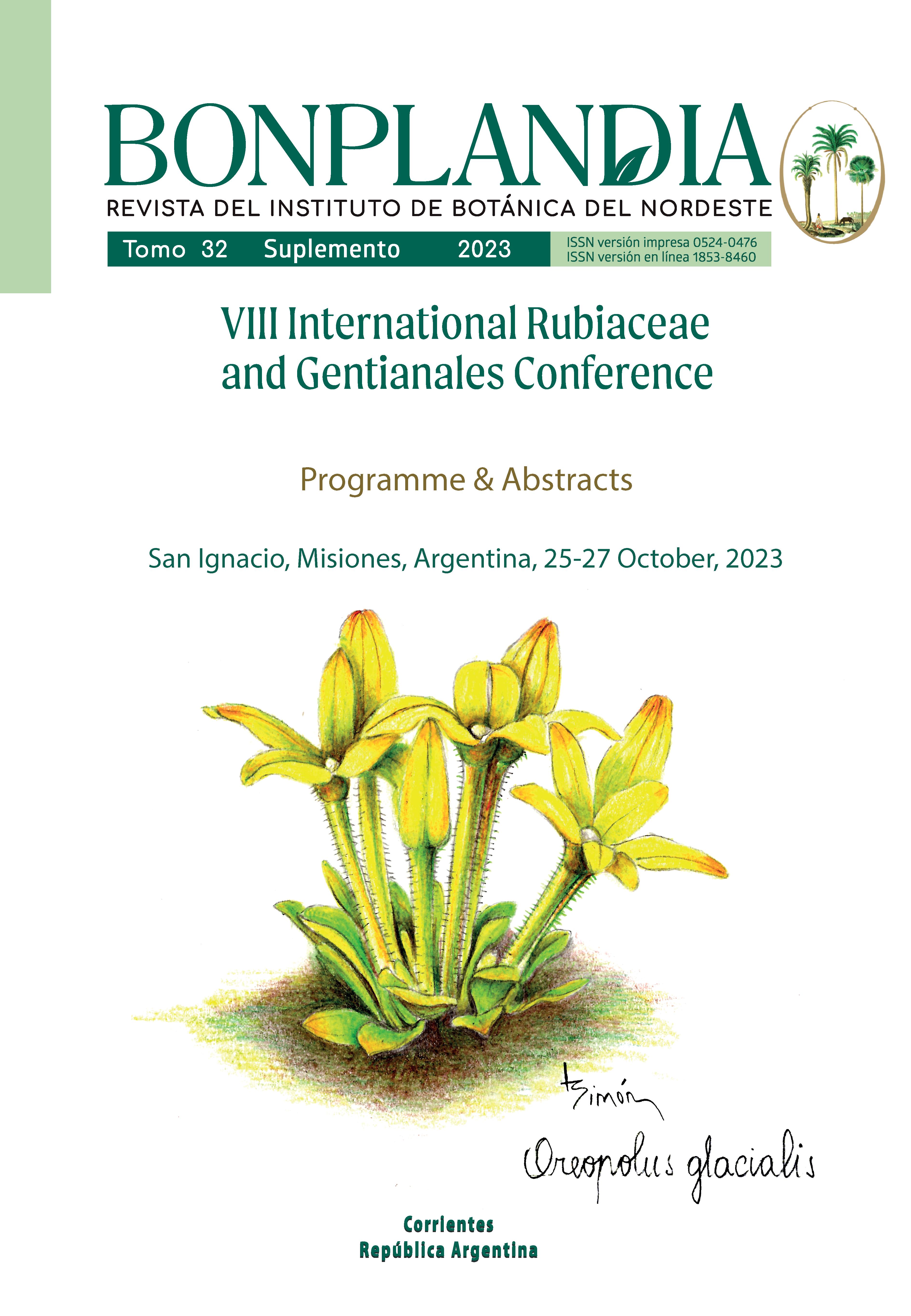Diodia kuntzei (Spermacoceae-Rubiaceae), some adaptations of an annual species to constantly changing habitat: aerial, subaquatic, and underground fruit formation
Abstract
Diodia kuntzei is an annual palustrine species, with prostrate stems rooting at the nodes, very narrow corolla tubes and fruits with thickened spongy pericarp. Frequently, the species is a food source for wild herbivores and livestock. It is widely distributed in South America, in Venezuela, northern Brazil, Peru, Paraguay, Bolivia, and northern Argentina (Corrientes, Misiones, and Entre Ríos). It grows in seasonally waterlogged habitats or shallow water bodies. In the taxonomic review of the genus, a mention was made of the presence of “fruits between the roots” for Diodia kuntzei, suggesting probable amphicarpy, a very rare condition in Rubiaceae. Amphicarpy can be defined as the production of aerial and subterranean fruits on the same plant. In Diodia, it was reported in the perennial species Diodia virginiana. Field collections and observations of Diodia kuntzei were performed in Argentina, Paraguay, and Bolivia. Based on greenhouse plants and field observations, we report for the first time amphicarpy in D. kuntzei, a phenomenon particularly unusual in an annual plant species. Underground fruits are white, achlorophilic, and irregular in shape. As in other amphicarpic species, the underground flowers are cleistogamous and probably obligate autogamous. Additionally, based on aquarium cultivated plants, subaquatic flower (also cleistogamous) and fruit formation was observed. This preliminary data reveal that D. kuntzei ensures its local persistence by means of underground fruits and vegetative reproduction, and attains long distance dispersal by means of aerial or subaquatic fruits (hydrochory). Future experimental studies to confirm these reproductive strategies, both in the field and in the greenhouse, are needed. Acknowledgements: PICT 3517.Downloads
Download data is not yet available.
Downloads
Published
2023-10-26
How to Cite
Cabaña Fader, A. A., & Salas, R. M. (2023). Diodia kuntzei (Spermacoceae-Rubiaceae), some adaptations of an annual species to constantly changing habitat: aerial, subaquatic, and underground fruit formation. Bonplandia, 32, 3. Retrieved from https://revistas.unne.edu.ar/index.php/bon/article/view/6940
Issue
Section
Presentations
License
Copyright (c) 2023 Bonplandia

This work is licensed under a Creative Commons Attribution 4.0 International License.
Declaration of Adhesion to Open Access
- All contents of Bonplandia journal are available online, open to all and for free, before they are printed.
Copyright Notice
- Bonplandia magazine allows authors to retain their copyright without restrictions.
- The journal is under a Creative Commons Attribution 4.0 International license.











.jpg)


